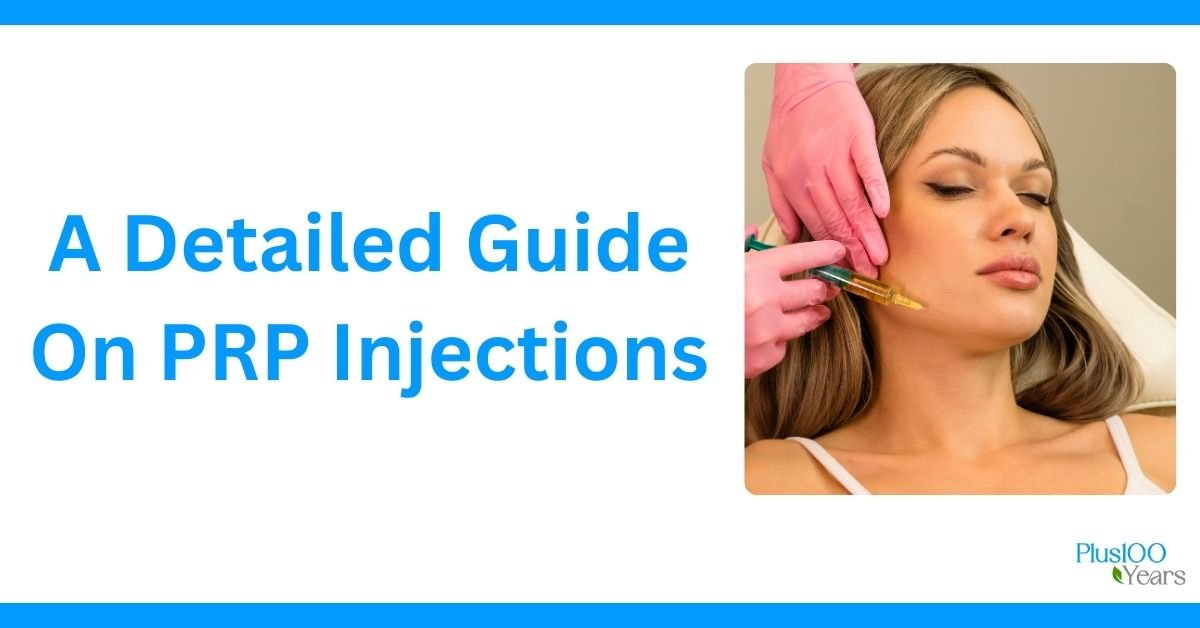Platelet-rich plasma therapy aids in stimulating natural growth factors required for the healing of damaged tissues.
Also known as PRP, platelet-rich plasma is a mixture of blood plasma with a high concentration of platelets.
The therapy is frequently used in sports medicine and post-injury rehabilitation. Here’s an overview of what to know about PRP injections
What Are Platelet-Rich Plasma Injections?
Plasma is the liquid part of your blood and features water, proteins, red blood cells, white blood cells, and platelets.
Sports medicine doctors can withdraw plasma from your blood and centrifuge it to increase the concentration of platelets.
The platelet-rich plasma is then injected into the injury site to speed up healing and recovery. PRP injections are regenerative medicine therapies that can help treat various conditions, including injuries to muscles, tendons, and ligaments.
Platelets, or thrombocytes, are rich in growth factors and aid processes like blood clotting, growth, and healing.
When you’re injured, platelets are naturally circulated to the injury site, where they release growth factors to begin the healing process.
Doctors can inject PRP into the injured joints, muscles, ligaments, or spine to increase the concentration of platelets.
High concentrations of platelets stimulate collagen production, reduce pain, improve cell function, and support the growth of healthier, stronger tissues.
What Are Platelet-Rich Plasma Injections Used For?
Platelet-rich plasma injections help treat sports-related soft tissue injuries like Achilles tendon tears and rotator cuff tears.
The therapy is also used to treat calf muscle injuries and degenerative conditions like knee, hip, and shoulder osteoarthritis.
PRP therapies also reduce pain and improve function in patients with tendinosis conditions like golfer’s elbow and tennis elbow.
Sports medicine specialists also use PRP shots to treat neck and back pain, chronic tendon and ligament injuries, and cartilage injuries.
Other uses of PRP shots include treating degenerative or herniated discs, sciatica, meniscal tears, plantar fasciitis, and ankle sprains.
The injections can also occur during surgery to speed up healing and recovery.
PRP shots reduce the need for over-the-counter anti-inflammatory drugs and opioids because they optimize the initial inflammatory response during healing.
How Are Platelet-Rich Plasma Injections Administered?
PRP shots are usually administered in your doctor’s office and involve drawing one or more tubes of blood from your body.
The blood is centrifuged to separate it into various components, and platelets are collected and concentrated.
Once the ideal concentration is achieved, the platelets are added to a liquid base of blood plasma and injected into the injured area.
Doctors sometimes use ultrasound imaging to guide the injection process and target injured tissues.
PRP therapies usually take less than an hour, and you may need to rest after the procedure, depending on the nature of your injury.
Follow your doctor’s instructions on how soon you can resume normal activity.
PRP therapy administration can happen alongside other treatments and medications, but you may need additional injections to optimize the healing process.
Doctors may also recommend stopping the use of nonsteroidal anti-inflammatory medications before, during, and after treatment.
Start Your Recover With PRP Injections Today
PRP shots rarely cause any side effects because the blood comes from your body, so it doesn’t introduce any foreign elements into your system.
Your doctor determines the ideal concentration of platelets based on your injury and treatment plan. Contact an experienced sports medicine specialist today to start PRP injections for injury rehabilitation.




